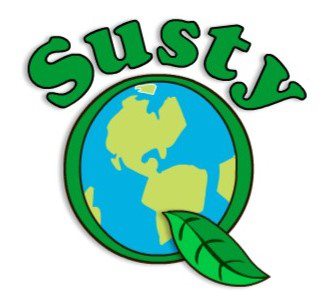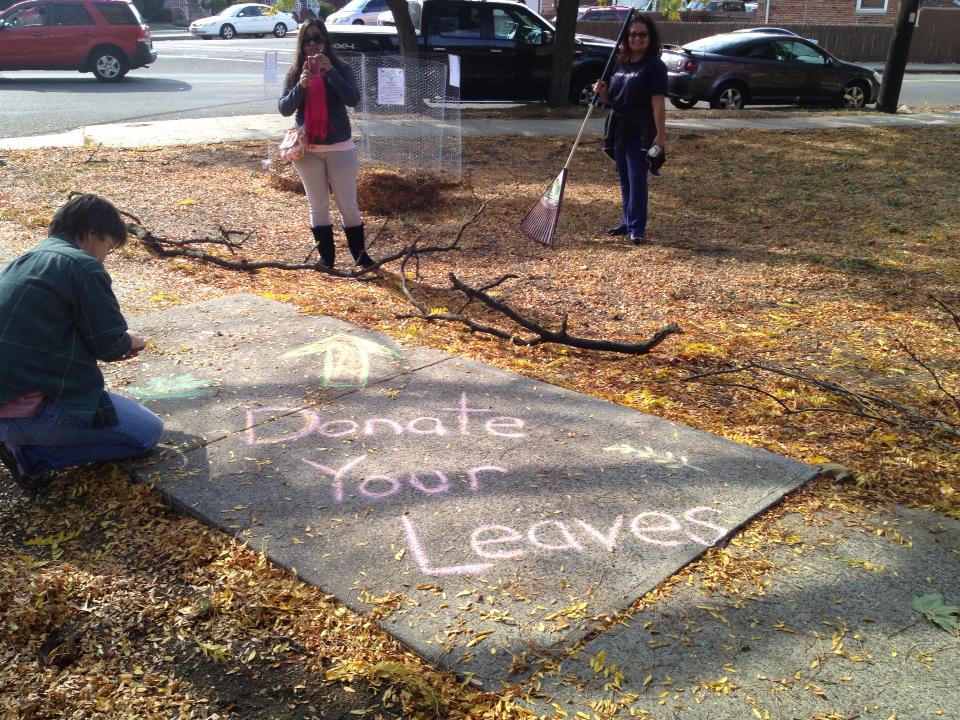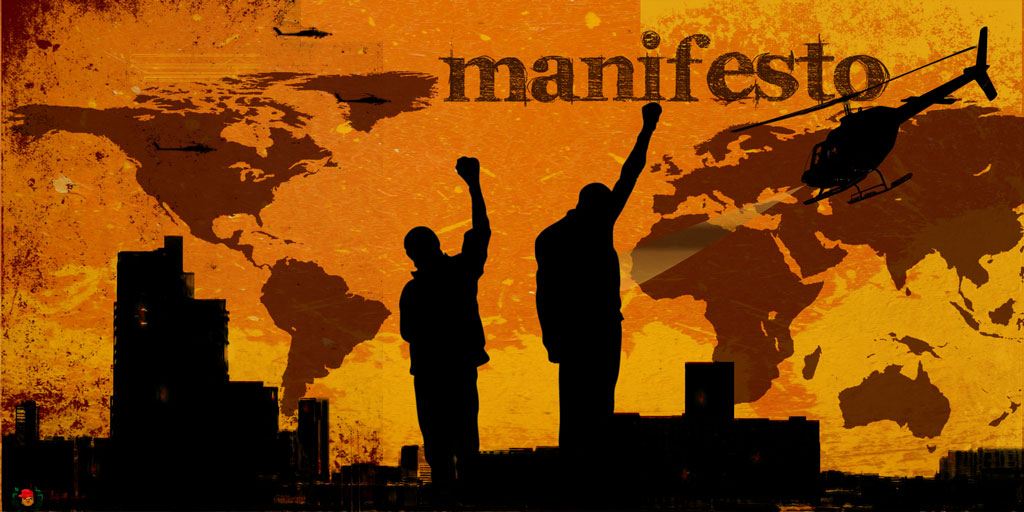Manifesto Presents: Seven Pillars - An Interview With Anandi Premlall of Sustainable Queens
 Wednesday, June 25, 2014 at 11:44PM
Wednesday, June 25, 2014 at 11:44PM 
New York City is in the initial stages of what can be seen
as a green evolution. The past few years have borne witness
to the rehabilitation of the West Side via the Highline and
the Hudson Greenway as well as certain major stretches of
city streets made into pedestrian friendly areas. These new
green initiatives are primarily focused on the boroughs of
Manhattan and Brooklyn. But inroads are slowly being made
to other areas of the city. Queens, the largest borough of
the five in total, finds that there’s at least one organization
that is determined to make sure that it not only has a fair
share in this evolution but to be a part of the vanguard. That
organization is Sustainable Queens, or SustyQ for short.
Sustainable Queens has accomplished quite a bit in a short
time, and Manifesto had the chance to sit down and interview
one of the founders, Anandi Premlall in April to find out more.
Manifesto: To begin with, what drew you to be so environmentally
conscious and an advocate for green space awareness?
What were your inspirations?
Anandi: Well, the first thing is coming from Guyana and the
Caribbean. Having that was my first exposure to my
home, neighborhood and community was like - all
the lush trees, the fruit, the flowers. Clean air, in a
clean neighborhood. And then living here in Queens,
New York, part of me was trying to get back to that.
Trying to find ways to recreate that here, trying to
figure out what I can do here by my house, in my
neighborhood, in the borough and New York City.
Trying to get some sort of feeling of bringing nature
back.
Manifesto: With your background of being in a place like Queens,
New York - specifically Southeast Queens - how much
did that really form your needs for more community
efforts for green space and just a better environment
overall?
Anandi: Being in Queens specifically, I noticed that Queens
lacks green spaces. Considering who lives in Queens
and the various neighborhoods, there’s several big
parks that are hard to get to and that only cater to
whoever lives nearby. Then you have the issue of
transportation making access difficult. (laughs) Then
in terms of community gardens, Queens has very
little. About ten or less at this point. And with Queens
physically being the biggest borough, it just didn’t
seem right to me. So I was just trying to figure out
how is it with so much potential space - and with
homeowners who have backyards and front yards..
even though that’s the case, it doesn’t necessarily
mean that these backyards and front yards are green
space anymore. One of the things that’s been going on
is that new homeowners come in and the first thing that
they do is chop down the trees, pave over the backyard,
pave over the front yard and as you may know it
opens quick and in Southeast Queens there’s a flooding
issue. That directly ties in to having green space where
the water can be absorbed by trees, by the soil and
lacking that creates this other issue that we need to
deal with. And that’s something that I’m working on
creating possibilities for. Photo credit: SustyQ
Photo credit: SustyQ
Manifesto: With regards to those possibilities, can you give us a
rundown on what Sustainable Queens is, better known
as SustyQ?
Anandi: Yes! SustyQ focuses on art, wellness and ecology. Putting
the ‘awe’ in aswesome. We work on projects like Critical
Moss, where we’re adding moss graffiti or green graffiti,
otherwise known as plants in spaces around the community
to create interesting conversations using art and plants
to create community. One of our projects is called Taking
Liberty where we’re transforming ten blocks from Lefferts
Boulevard to the area around Sybil’s. We’re doing cleanups
there, putting out bird feeders, getting over twenty trees
planted there through a grant that I applied for last year.
Within a few months, we have twenty new trees planted
by MillionTreesNYC and the Parks Department. Now it’s up
to the community to adopt these trees and take care of
them. One of the other projects we’re working on is an
anti-cancer garden in Richmond Hill. We’re currently
advocating with Green Thumb and community locals to
create this healing space where we will have 50 small trees,
plants and herbs and also a healing and meditation space
for those that are dealing with cancer right now. To let them
know that they are not alone and also a space where we
can hold them in memory and literally hold space for those
who have passed on and as support for the family of those
who’ve passed. And overall, the ultimate goal is to have a
beautiful space within the community, where you walk by
this corner, and there is something there. To go sit and
relax. Because it is one thing - and that’s something the
Taking Liberty project advocates for, sitting spaces and
benches in our neighborhood - that elders especially consider
a great need.
Manifesto: How have your efforts, along with others that work with
you on these great initiatives, how have they made an
impact on the youth in your area and their thinking towards
their environment in this way and how it relates to
community?
Anandi: There are a couple of ways that the youth have been
affected. Most of my volunteers are youth groups. We
recieved an award last year from the Indo-Caribbean
Alliance which holds auxillary programs for Indo-Caribbean
youth in the Richmond Hill, Ozone Park areas of Southeast
Queens. They’re partnering for the anti-cancer project,
the anti-cancer garden and the also the free giveaways
we have going on in May. And also, I spoke to Richmond
Hill High School students and they are inspired to continue
what’s happening on Liberty Avenue and creating and
edifying the neighborhood. So, once a month I gave them
a whole bunch of ideas and they’re choosing which ones
they want to work on every month. So we did one where
I gave them a bag of birdseed and they created these bird
feeders and installed them all over the neighborhood. And
they went back and they’re checking up on them to see if
the birds were eating it, which they are. With little bits of
urban ecology, they’re helping to create a love for the
community, attention to the environment and that they
can do something. One of the most important things I’ve
found is that, and this gets more true when one becomes
an adult, is that there’s so much paperwork, so much red
tape, so much policy. All of that goes on when you’re trying
to do something within the community, on public property
or within the neighborhood. That can hold a lot of people
back. That’s definitely intimidating for youth, who feel like
they have something valuable to contribute. So I suggested
to them is, learn the rules of what you can and can’t do,
and by creative ways, get around them. By guerilla gardening.
We guerilla garden daffodils all around Liberty, and we’ll be
doing some more flowers this year. There are small actions
that have a big impact that they can take that don’t cost a
lot of money, ‘cause that’s a big factor - don’t cost a lot of
money, don’t take much time and don’t require permission
to do. So that gets them interested, like ‘oh I can be a rebel
and do something good!’ (laughs) So that makes me really
happy.
Manifesto: Great! Now you had mentioned something in a previous
response using art. I know that you have an art background,
how much does art and design play a role in your promotion
of environmental awareness?
Anandi: Art plays an fairly important role, I think in everything. Whether
it’s in my background of visual art and writing, or the culinary
arts if you count that - but that’s a whole other subject (laughs).
So in terms of visual art and writing, especially visual art - it’s
a great way to connect all of the diverse communities in Queens,
which is one of the most diverse places on Earth without having
to counter language barriers. And that’s the beautiful thing
about art is that they can look at it, and get it. ‘Oh! Hmm, what
is that?’ How can I create and install something within the
community that would make someone stop and say, what is this?
Or what does this mean? Or even create some sort of green thing
hanging where it shouldn’t be. (laughs) Because we have all of
this infrasructure and concrete put in a place where nature is
supposed to be. Using visual art avoids, or supercedes a lot of the
issues that come up and leads to sharing ideas on what can be
done. I’m a big fan of creating that, especially in utilizing handouts.
Handouts create literacy in terms of composting and urban composting.
Also handouts that show what diverse communities can do as it
relates to their culture, what they can do with having image and
words. I found that having spirtual presentations or murals or
moss graffiti…that having that bridge is so automatic. It doesn’t
require that much thinking. It’s an easier way to getting that
point across. It’s a fun, easy, colorful and creative way to get
serious and important messages out to the masses without
being scary or intimidating.
Manifesto: What else are you involved with, project-wise besides Sustainable
Queens?
Anandi: Another project that I’m working on is called The Queens Way.
Which is a vision for a 3 1/2 mile cultural community greenway
that will run from Rego Park to Ozone Park. There’s some former
Long Island Railroad tracks, the Rockaway Beach line, that’s not
been working for the last 15 years. The land has been transferred
from the MTA to New York City. What we’ve been working on for
the last couple of years in teaming up with the Trust for Public
Land, and now with a bunch of other consultants including the
Alliance Studio, Hester Street Collaborative and WXY, to create a
feasability report. This feasability report will show what can be
done with what exists right now which covers the land, and the
trestles, which varies from Rego Park to Ozone Park. There’s parts
above ground, parts that are viaducts, and parts that are packed
and below grade. One exciting thing that’s happening with that
is the feasability report coming out in June of this year which will
have more images. Which will hopefully get more community
members to support. It falls in line with Bloomberg’s initiative
along with New York State to create more green space. Residents
will have a ten minute walk using this. There’s over a quarter
of a million people who’ll be affected by this in a positive way. This
is something like the Highline, but this is something for the
community, for the people instead of it just being a tourist
attraction. And so we’re looking at ways where each segment
so it’s not just one massive greenway, where each segment has
a bit of a different personality that relates to the community
nearby. So there’s four or five schools next to the Queens Way.
It’s a way for them to explore nature and science outside. It’s
a way for them to walk to school again from where they live,
versus the parents having to drive them. So that would decrease
traffic in the area and create an easier commute for everyone.
Kids can ride their bikes to school or walk to school and increase
their wellness and cut down on the obesity that’s affecting so
many children, and it’ll be great for everyone in the area to
increase their health and wellness. To have a safe space to walk,
bike, meditate or whatever they choose to use the space for.
Manifesto: My last question is: what would you say to someone who is
interested in being environmentally aware and how would
you advise them to get started?
Anandi: Well, that’s a broad subject. (laughs). There’s so many things
that you can do and so many little steps to take. I’m very
biased with this, (laughs) but you can check out SustyQ. We
share a lot from great recipes to tips on how to grow your
own free food, how to utilize plants for clean air, little things
that you can do to create a healthy home. Things that you
can eat and possibly not eat to live more in sync with the
environment to create your own sustainability. So there’s
stuff and other resources out there. Sometimes it can be
confusing and overwhelming. Especially when you consider
that while there’s a lot of great info out there, there’s also
a lot of brainwashing. So that you don’t go ‘oh, this has a
green label, it’s eco-friendly, I’m gonna buy it!’ (laughs) There
are a lot of things that can be done without spending a lot
of money which is what concerns a lot of people with
something organic. And it is presented as expensive and
not attainable, especially for communities of color. But it
is something which our ancestors did, this is how we lived.
It’s something we’ve moved on from, and it’s something
we can get back to, which is simply living very well by our
hands.
For more on Sustainable Queens and their efforts, check them out at
the links below. For those in New York City, they have a special tree
nurturing event this Sunday at 9 A.M., information on which can also be
found at the links:
https://www.facebook.com/SustyQ
http://www.SustyQ.com


